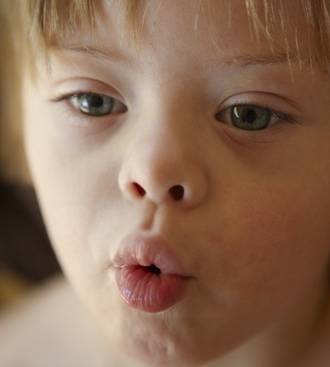Shop
01932
https://www.under5s.co.nz/shop/Hot+Topics+Articles/Health+%26+Wellbeing/Toddlers/Childhood+apraxia+of+speech.html
Childhood apraxia of speech
|
Does your child have childhood apraxia of speech? Find out more about this muscle disorder, the main characteristics of apraxia of speech and how it can be treated.
|
You might also be interested in ...
5 Tips on how to look after your baby’s skin
Babies have delicate skin which can sometimes become irritated by things like textiles, talcum powders, soaps and other common baby care products. Often, the culprits are harsh chemicals, which can not only harm your baby's sensitive skin, but can also damage the planet. Here are 5 ways to help look after your baby's skin using eco-friendly baby products, which are better for your baby and for the environment.
Kids pet allergies
How do you know if your kids have pet allergies? We take a look at what signs you need to look out for, dealing with pet allergies, testing for pet allergens and common culprits. Plus we share some helpful tips on living with your family pet and ideas on what to do if allergy symptoms persist.
join usJoin us on social media for all our latest news. |
sign upSign up and receive our latest newsletters. |
|







Find out more about this muscle disorder, the main characteristics of apraxia of speech and how it can be treated.
What is childhood apraxia of speech?
Childhood apraxia of speech is a muscle disorder that makes it difficult for children to produce sounds, syllables, and words.
The muscles of their mouth are not actually weak; rather their brain cannot properly coordinate muscle movements.
Their brain knows what it wants to say but has a hard time telling their lips, tongue and jaw how to move the right way to produce speech sounds correctly.
Childhood apraxia of speech is usually present from birth and it seems to affect boys more than girls. However, it is not fully known what causes childhood apraxia.
Some researchers believe it’s related to a child’s overall language development while others believe it’s a neurological disorder that affects the brain’s ability to send the proper signals to move the muscles involved in speech.
Children with childhood apraxia of speech often have family members who have a history of communication disorders or learning disabilities which tends to suggest that genetic factors may play a role in the disorder.
There is no single factor or test that can be used to diagnose apraxia. Medical specialists generally look for the presence of some of the main characteristics listed below, ruling out other contributing factors, such as muscle weakness or language-comprehension problems.
Testing and monitoring usually takes place over some time.
Characteristics of apraxia of speech
Some of the distinguishing characteristics of childhood apraxia of speech may include:
Treating childhood apraxia of speech
Treatment for childhood apraxia of speech usually involves intensive speech therapy, often 3-5 times a week initially.
Therapy sessions usually target improved coordination of their muscle movements through lots and lots of repetition and attempting to say syllables, words and phrases.
A speech therapist will usually work with your little one to help shape their muscle movements into clearer speech.
Practice at home is very important. Parents will often be given assignments to help their little one progress and allow them to use new strategies outside of the treatment room.
With time and hard work, many children with apraxia can eventually become competent speakers.
If you think your child may have childhood apraxia of speech, contact your GP or medical practioner to discuss your concerns further and ask for a referral.
Like the article you've just been reading? Click on the Refer A Friend link at the top of the page and send the details to friends who might like to read it too.Tell your friends
More Hot Topics for you to enjoy
- Speech development in preschool children
- Baby signing
- First sentences
Image source: speechbuddy.com